The Strangers
 for violence/terror and language.
for violence/terror and language.
Reviewed by: Sara Bickley
CONTRIBUTOR
| Moral Rating: | Offensive |
| Moviemaking Quality: |
|
| Primary Audience: | Adults |
| Genre: | Horror Mystery Thriller |
| Length: | 1 hr. 30 min. |
| Year of Release: | 2008 |
| USA Release: |
May 30, 2008 |
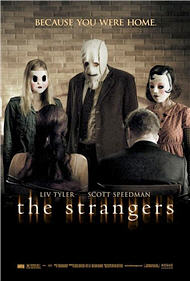
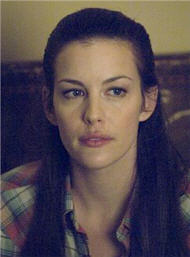
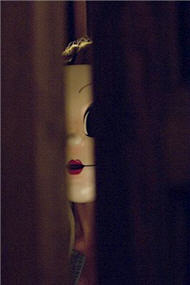
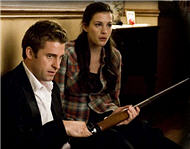
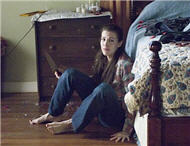
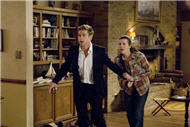
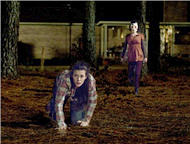
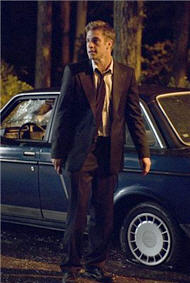
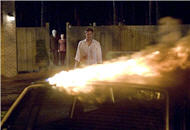
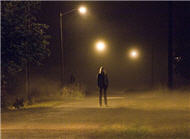
| Featuring |
|---|
| Liv Tyler, Alex Fisher, Peter Clayton-Luce, Scott Speedman, Gemma Ward, Kip Weeks, Laura Margolis, Glenn Howerton |
| Director |
|
Bryan Bertino |
| Producer |
| Thomas J. Busch, Doug Davison, Joseph Drake, Marc D. Evans, Nathan Kahane, Kelli Konop, Roy Lee, Trevor Macy, Sonny Mallhi |
| Distributor |
“Lock the doors. Assume you’re safe.”
“The Strangers” is a truly scary film that ramps up tension to an almost unbearable degree by combining interesting ideas with tried-and-true film mechanics.
The story is simple. After a brief, foreboding prologue, we are plunged into the story of young couple Kristen and James (Liv Tyler and Scott Speedman) who are visiting a semi-isolated vacation home.
Their relationship has just taken a sour turn, but they continue to treat one another with courtesy and compassion, which makes them instantly sympathetic. For a little while, nothing strange happens. We simply watch as they drink and play records and discuss the future sadly but without rancor.
Then there is a knock on the door. It is an unpleasant, jarring knock, but James and Kristen seem almost glad to hear it: it distracts them from an incipient sexual encounter which, under the circumstances, might have proved emotionally devastating.
They answer the door to find a harmless, lost passerby… or is she?
From here on, “The Strangers” plays every horror trope. Kristen is briefly left alone in the house; the handheld camera catches her between glimpses of out-of-focus foreground, so that she seems bisected or even decapitated by the furniture. There are puzzling noises; there are faces where faces should not be; there are moments when you want to scream “Look behind you!” But unlike an ordinary horror-movie heroine, Kristen does not seem like an idiot for not noticing that she is being stalked. Rather, we see has retreated into her own mind; she is so consumed by sadness and confusion that she moves through the house without noticing or caring about physical details.
Gradually it dawns on her that something is wrong. James returns. There are odd, inconclusive encounters with three masked figures. Vehicles are disabled. The “cavalry” shows up and is promptly Little-Bighorned. There is even a scene in which the fleeing Kristen falls and injures her leg.
These sequences are all familiar: they have appeared time and again in slasher movies and in supernatural horrors that imitate the slasher plot.
But in slasher movies, people die. In this movie, for most of the running time, they don't. The body count in “Friday the 13th” is higher than the number of credited cast members in “The Strangers.”
There is one death, along with one gruesome injury, during the middle part of the film. But both are accidents caused by errors of judgment on the part of the heroes. The worst the masked “strangers” do, at this point, is property damage; their intent is not to kill, but to frighten.
That, in a way, is what “The Strangers” is about: the damage we do to ourselves when we fear things that may not be deserving of fear. It may seem odd for this message to appear in a film intended to terrify—but movie terror is not real terror. Horror movies, at their best, are a way to practice being afraid, to sharpen both our sensory and our moral perceptions so that, when we are faced with real-life horrors, we are not overcome with unreasoning fear.
With their masks on, the “strangers” were invincible, because James and Kristen reflexively fled or fought without pausing to question how powerful or how intelligent their attackers really were. By the time the masks come off, James and Kristen have already been rendered helpless by their own fears; they are not helped by fresh proof that the “strangers” are ordinary people after all.
The next-to-last scene has a peculiar resonance, though probably not one the filmmakers intended. Two adolescent boys—we know from the prologue that they are about to discover the blood-bedecked house—walk by the side of the road. We see they are door-to-door evangelists carrying tracts. (The credits identify them as “Mormon Boys,” but the particulars of their faith have no bearing on what happens next.)
A pickup truck pulls up beside the boys, and the unmasked “strangers” get out. One of them asks for a tract. “Are you a sinner?” the boy asks.
The reply: “Sometimes.”
As the “strangers” drive off, one says, “Think it'll be easier next time?”
That line of thinking—“Sometimes I am a sinner (but sometimes I am not); maybe my conscience won't bother me so much next time.”—that is something to fear.
Content Language
About a dozen obscenities, and a smattering of profane and scatological language.
Sex/nudity
Kristen appears briefly in the bath, all shoulders and knees; Kristen and James (who are unmarried) initiate sexual contact, but are interrupted before any clothes come off. Violence: A car crash (in which no one is injured); shotgun used for self-defense; windows and doors smashed with an ax; a number of gory wounds, some inflicted with a knife; dead bodies are discovered by children.
Alcohol/drugs
James and Kristen drink champagne, and later Kristen is seen drinking a beer. James drives after drinking. Kristen smokes two or three cigarettes on-screen, and her running out of cigarettes affects the plot.
Violence: Extreme / Profanity: Heavy / Sex/Nudity: Moderate
See list of Relevant Issues—questions-and-answers.


I am a huge fan of horror films, which have lately been disappointing. “The Strangers” brought back true elements of terror—being alone, the ever prestent question why?, not knowing who the bad guy, in this case bad guys are. I enjoyed the slow building of tension, it is slower than the average horror film, but all to the film's benefit.
The violence is lower on the gauge than I had thought it would be, even having viewed the “unrated” version of the film—but again, it was to the benefit to the film. The sexual content could have gotten worse, but just before it can escalate, the characters are interrupted. Some language, I didn't notice it too much (though I can't deny I might let some choice words slip if I had been in their predicament).
All in all, “The Stangers” was a well made movie that scares you just because it is truely scary. I reccomend this to any horror fan, and to some of those who don't particularly like the genre. Top-notch film making!!!
Moral rating: Average / Moviemaking quality: 5


My Ratings: Moral rating: Very Offensive / Moviemaking quality: 4